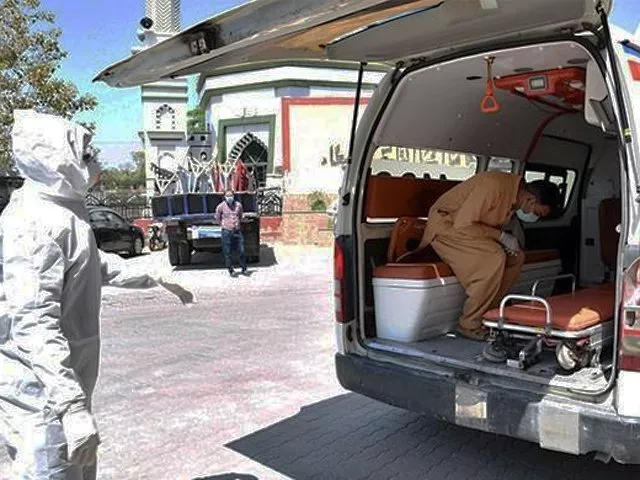Fragile health facilities may face corona catastrophe
Healthcare system may collapse if COVID-19 outbreak continues to spread in Pakistan
In a little more than a month since patient zero, Pakistan has registered over 4,200 coronavirus cases - the government estimates that the case will exceed to 50,000 by the April end.The crippling national healthcare system is expected to collapse if the outbreak continues to spread by leaps and bounds, as it is not capable enough to address the global pandemic, Bloomberg reported on Wednesday.
The World Health Organisation statistics show that Pakistan spends just 2.9% of the gross domestic product on health, a number significantly below neighbouring India and less than half the global average.
The country is one of only three with ongoing polio transmission, and it has reportedly struggled in recent years to contain AidsIDS and dengue outbreaks.
Health care in Pakistan “continues to suffer from coordination challenges and an acute shortage of resources,” says Arsalan Ali Faheem, a consultant at DAI, a Bethesda, Md.-based company that advises on development and health projects. “The country has been hard-pressed to find resources for health delivery.”
Global recoveries from COVID-19 surpass 300,000
He said that health care in Pakistan “continues to suffer from coordination challenges and an acute shortage of resources".
Most of the health services including ambulances, hospitals are mostly funded by charitable organisations whereas paramedics staff lack training to operate critical-care equipment, said Asad Sayeed, an economist at the Collective for Social Science Research in Karachi.
Commenting on Pakistan's economic conditions, he added that finance is an issue, whereas it is also about priorities since budget for health is meager when it is compared to the country's defense budget.
Sayeed also said that after the 18th Amendment of the Constitution, the federal government has a very limited role to play in the health care sector. Collectively, federal and provincial health spending in the last fiscal year was the lowest since 2016.
There has been a lot of debate over the mishandling of pilgrims that had entered from Iran to Pakistan via Taftan border in Balochistan and the airports, many believe that the country failed to screen most of the pilgrims that become of of the source for the pandemic to spread in the country.
Sindh govt to introduce ordinance for financial relief
Thousands of travellers without symptoms were waved through the border. Those who felt ill were sequestered in a makeshift tent city on the Pakistani side that, according to patients, had no soap or hand sanitizer. “If one is affected, everyone would get it,” says Mohammad Hussain, 42, who spent more than two weeks there. “The camp was a breeding ground for the virus," he added.
The government is trying to curtail the numbers by banning public gatherings and restricting the movement of the citizens. After quite an effort, it reached a deal with religious scholars to close down mosques and shrink crowds at Friday prayer.
Officials are going door to door looking for possible cases, with assistance from military personnel, a daunting task in one of the world’s most populous countries. In Karachi, local authorities have converted a convention hall into a 1,200-bed field hospital in anticipation of a surge in patients.
On the other hand, the federal government had submitted a report in the Supreme Court stating that they estimate 50,000 patients of coronavirus in the country by 25 April 2020.
The number of tests for COVID-19 performed in Pakistan is less than 50,000 as of now.
The country has done a very limited number of tests, fewer than 50,000 whereas US has done about 2 million tests.
The story originally appeared on Bloomberg


COMMENTS
Comments are moderated and generally will be posted if they are on-topic and not abusive.
For more information, please see our Comments FAQ